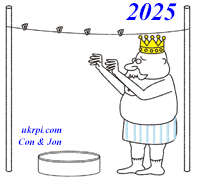|
Until late September 2022, few people not involved with UK DB pension schemes (and even some of those who are) would have known about “LDI” (“liability driven investments”), let alone the problems present.
Most people probably think of investments as financial instruments that can be held or sold with no further consideration needed after the initial purchase (property maintenance is a different issue). However, LDI is actually a long-term swap contract, under which regular margin calls in either direction must be met as an intrinsic element of that contract.
Normally, the scheme receives a fixed rate and pays a floating short rate. If the latter increases, then the swap can become unprofitable for the scheme. Where, as has been surprisingly common, the LDI is leveraged, the losses can be, and have been, eye-watering.
While most people are now also aware that LDI contracts related to index-linked gilts, what is startling is that the swap contracts were not based upon those securities other than being collateral. To be clear, the swap did not rest upon the income generated from the collateral and equities or other bonds could equally well have been used as collateral. Indeed, the coupon on index-linked has become very low and would not have supported much of an income swap.
For long index-linked gilts, over the period between 30 Nov 1998 and 29 Dec 2023, the daily change in real yield has been as low as (0.94%) on 28 Sep 2022 and as high as 0.69% on 10 Oct 2022. If we could have included 2024, for which we don’t have daily data, those extremes would have remained the same. The point is that such extreme variations would lead to huge price swings as was observed. The extent to which the potential losses were modelled and explained to trustees is far from clear.
A swap contract needs a counterparty, which will normally be a large bank, staffed with specialists in the area. Over the last decade, or a little longer, it seems that trustees and sponsors have gained the idea that these arrangements are tantamount to a free money tree, justifying high levels of leverage. Quite how that developed is hard to fathom, especially since the banks are not known for their generosity. The extent to which trustees and sponsors really understood what was involved is also hard to understand.
Having spoken with a couple of actuaries working in this area, Jon has been assured that the arrangements will have been fully explained; we're just not sure about the understanding. Not actually knowing what they did, we imagine that actuaries treated those contracts within funding valuations at market value without being able to draw attention to the inherent risks, which may have been hard to model but should have been attempted.
|



